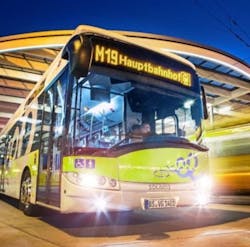Speeding Up the Widespread Adoption of Wireless EV Charging
Proponents of wireless inductive electric-vehicle (EV) charging continue to make headway with this form of energy-transfer technology. Following Tesla’s announcement that its upcoming Robotaxi (expected to be available in 2027) will operate via a low-power wireless home charging system, Philadelphia-based InductEV and Skien Norway's ENRX signed a memorandum of understanding (MOU) that seeks to establish technical standards and ensure compatibility across the wireless EV charging ecosystem worldwide.
InductEV and ENRX are focused on a standard at power levels several times higher than the Tesla system. It’s an essential step toward eliminating range anxiety that has impeded the growth of EVs.
InductEV and ENRX Collaborative Plans
Areas of collaboration include:
- Support for SAE J2954 standardization efforts: Both companies will dedicate resources and technical expertise to participate in working groups, committees, and other activities related to the development and finalization of the SAE J2954 standard and other relevant standards. SAE J2954 is a standard focused on wireless power transfer (WPT) for electric vehicles that defines three classes of charging speed—WPT 1, 2 and 3, at a maximum of 3.7, 7.7, and 11 kW, respectively.
- Compatibility and interoperability testing: InductEV and ENRX will work together to test their wireless-charging solutions for mutual compatibility, ensuring that their products can operate seamlessly across diverse platforms and configurations within the EV market.
- Industry advocacy and promotion: InductEV and ENRX will jointly promote the benefits of standardization within the industry and to regulatory bodies, advocating for the adoption of a universal standard to ensure that wireless-charging solutions are accessible, reliable, and compatible.
In-Ground Pads Used in InductEV Charging System
InductEV’s high-power wireless-charging system works by using inductive charging pads. These in-ground pads are instantly activated when paired with an under-the-vehicle pad, which is installed during the vehicle’s manufacturing. Current InductEV systems can provide from 75 up to a 450-kW wireless power output.
The company’s solution shifts the charging paradigm from relying solely on time- and energy-intensive overnight wired charging sessions in depots to shorter charging sessions spread throughout the day. It reduces the obstacle to electrification for both power utilities and fleet operators by maximizing the use of available renewable energy.
“We look forward to working alongside the engineers at ENRX to help standardize the technical specifications of wireless-charging technology across the globe,” said John Rizzo, CEO, InductEV. “We’re at a tipping point in the transportation sector’s adoption of wireless inductive charging, making this collaboration that much more crucial as end customers and vehicle makers want to be assured of multiple sources of supply for this mission-critical technology. As a company, InductEV has already shipped gigawatts of power wirelessly, more than the entire industry combined to date. We are well positioned with ENRX to contribute to the coming wireless EV charging transformation.”
Other current InductEV wireless-charging deployments include:
- A new agreement with Seattle’s Sound Transit will deploy double-decker electric buses along its busiest routes. By the end of 2026, half of all battery electric buses in the state of Washington are projected to be charged by InductEV’s on-route wireless chargers.
- The first deployment of wireless-charging electric port tractors at the AP Moeller Maersk Terminal in Port Elizabeth, NJ.
- Municipal transit buses in Indianapolis, Martha’s Vineyard, and Oregon are operational.
- An OEM integration with Phoenix Motor Inc., a manufacturer of heavy- and medium-duty transit buses. This is in addition to automakers BYD, Gillig, MAFI, OrangeEV, Volvo, and others, which provide integrated InductEV technology off the vehicle production line.
- A partnership with Volvo for a wireless-charging taxi fleet of electric SUVs in the Swedish automaker’s hometown of Gothenburg, plus additional installations in Oslo, operational for three years.
InductEV’s on-route wireless-charging solution enables fleet operators to replace diesel-fueled vehicles one-for-one, which is difficult to achieve with wired depot charging. Depending on use case, it can also offer significant savings in total cost of ownership, said to be typically 25% or greater, compared to depot-based wired chargers.
ENRX Wireless Induction Charging
In the charging arena, ENRX has delivered wireless induction charging solutions for ferries and various industrial vehicles, as well as for buses in several major cities in Europe. Notably, in Braunschweig, Germany, a 12-km bus route equipped with a 200-kW wireless-charging system has been continuously operating for over a decade (see figure).
ENRX technology enables vehicles to charge wirelessly while driving, shaping the future of sustainable transportation infrastructure. It’s pioneering the world's first 200-kW electrified roadway in Orlando, Florida. The 1.2-km (0.75 miles) pilot section within the larger 8-km (5 miles) Lake/Orange Expressway State Road 516 is now in development. This project will showcase high-power wireless-charging technology capable of supporting long-haul trucks and passenger vehicles while in motion.

